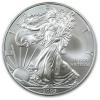| Online: | |
| Visits: | |
| Stories: |

| Story Views | |
| Now: | |
| Last Hour: | |
| Last 24 Hours: | |
| Total: | |
South Korea Cuts Rates To Record Low Amid MERS Fears, Slumping Exports
Overnight, the Bank of Korea cut its benchmark policy rate by 25bps to 1.5%, a record low. The cut is the second this year and comes as the country grapples with slumping export growth and the second-largest MERS outbreak on record.
On the economic front, a weak yen continued to weigh on exports in May, while Q1 GDP growth — at 2.5% — was the slowest in two years.
Since May 20, 120 people have been infected and 10 have died. Contagion fears could dent consumption and curtail tourism as it’s possible to spread the virus via respiratory droplets (i.e. coughing). The death rate for MERS is in the neighborhood of 40%. Morgan Stanley has more on the macro implications:
Weekend movie visits declined by 36% to 1.6mn from 2.4mn for last weekend (June 5 & 6) compared to the period before MERS fears hit (weekend of May 22 & 25). Hypermarket, department stores, amusement park sales and visits declined on week-on-week basis by 20-50% as reported in several local news articles including Kookmin Daily, dated June 8. Finally, the Korea Tourism Organization indicated tourists visit cancellations from June 1 to June 7 were more than 6,000 daily on average, which represents about 20% of the 1,000,000 visits monthly.
It is hard to quantify yet, but overall consumption should see negative impact in the near term from dampened sentiment. According to local media, department stores and hypermarkets have witnessed -5-9% and -12% of revenue decline YoY, respectively, in the first week of June (source: Korea Economy Daily). Instead, online shopping has surged rapidly (up 60% YoY at the E-mart online site) during the period. Given online portion of 4-5% of total sales, soaring online sales would be not sufficient to offset traffic decline at offline stores. Based on the increasing patient number trend on second-hand infection cases, we think the second week trend can deteriorate. However, this trend should be temporary and it should recover once MERS is contained, in our view. In addition, the government’s effort to boost the domestic economy could accelerate the consumption recovery later this year (including a rate cut). Tourism (especially foreign inbound) should be another segment to be affected on the back of this MERS outbreak. Benchmarking Hong Kong’s case with SARS in 2003, inbound traffic decline could be severe in the short term (down 60% in HK during 2Q 2003), but it should also rapidly recover (HK case: inbound traffic fully recovered after three months). And we think the traffic impact this time could be smaller than HK’s case as MERS is currently transmitted at hospitals only.
Here’s Goldman’s take:
The Monetary Policy Committee (MPC) of the Bank of Korea (BOK) cut its policy rate by 25bp to a historical low of 1.5%. With today’s decision, the MPC has cut the policy rate four times since Aug, 2014. 12 out of 18 economists expected a rate-cut for today’s meeting, according to a Bloomberg survey. The decision was not unanimous, with one dissenting vote to keep the rate on hold.
The MPC statement noted the potential negative impact of the recent outbreak of MERS (Middle East Respiratory Syndrome) on growth, especially private consumption. Together with sustained weakness in exports, the MPC stated the MERS outbreak suggests larger downside risks to the BOK’s April growth forecast of 3.1%…
Both the MPC statement and the governor noted there are downside risks to the BOK’s GDP growth forecast for 2015, which will be revised in July. While the BOK previously expected domestic recovery in consumption and investment to offset near-term weakness in exports, the governor said the recent outbreak of MERS is likely to dampen private consumption, especially in the services sector. The governor noted that the recent weakness in exports is due to certain structural factors, such as declining global trade volume and deceleration in China’s economic growth.
The tone of the press statement was broadly neutral, in our view, although the markets seem to have interpreted it as moderately hawkish given the decline of USDKRW and a selloff of KTB futures during the press conference. The governor indicated that future rate actions would continue to depend on economic data, although he stressed the importance of limiting growth in household debt. The governor again clarified that the Fed’s liftoff does not necessarily imply that the BOK will follow suit. He explained that while the Fed liftoff would see the risks of capital outflows rise in EM countries, Korea has relatively solid fundamentals, which could help differentiate the impact of Fed tightening in the region. With regards to the government’s program to promote outbound financial investment (to be released in late June), he noted that it would have meaningful impact on exports (by weakening the KRW) although changes need to be made regarding the forex hedging practices of local investors. He also acknowledged the effect of lower interest rates on exchange rates, although he sent a mixed signal by adding that there are many other factors affecting exchange rates.
* * *
Although Morgan Stanley doesn’t see scope for further cuts from the BoK, we would note that between Kuroda’s currency war and the MERS issue, the country faces formiddable headwinds in the near term. For now, Seoul will just have to hope the US army doesn’t inadvertently send over any more live anthrax samples.

![]()
Source: http://silveristhenew.com/2015/06/11/south-korea-cuts-rates-to-record-low-amid-mers-fears-slumping-exports/






